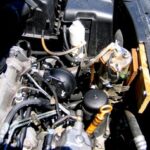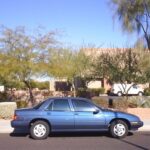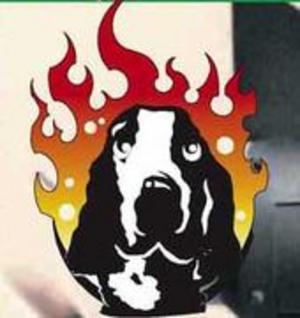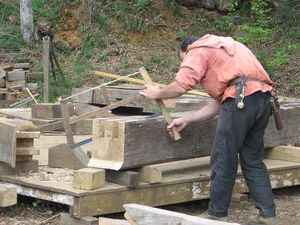Have you ever wondered how all those nuts and bolts and wires and sensors under your hood push your car down the road? If someone told you your car was not firing on all cylinders, would you understand what they meant? How about a blown head gasket, low compression or something to that effect? This reference is to gasoline-powered engines and will help you understand what happens from the time gasoline goes from your fuel tank to the engine to when it is burnt up and sent back out the tailpipe of your car. Of course, this will not make a mechanic out of everyone any more than reading a book on anatomy would make you a physician.
All gasoline engines work on the same principle. A simple push mower that we use to mow our lawn runs on the same principle that the engines in our cars do. Your vehicle may be equipped with a 4, 6, or even a 8 cylinder engine. Granted, there are more moving parts on the engine under the hood of your car than a lawnmower, but they all work on the same principle.
Engines have different amounts of cylinders and it is important to recognize and understand not only what a cylinder is, but how it works, as it is the heart of the engine. Most of us have visited the doctor and received a shot from a hypodermic needle. Let’s focus on the part the medication goes in, it has a plunger that sucks the medication in and also forces the medication back out the end of the needle. Cylinders work on the same principle, rather than a plunger there is a piston inside the cylinder that moves up and down. There are four cycles that make your engine run. The Pistons starts at the top of the cylinder, (top dead center to be technical) the piston is drawn downward in the cylinder creating a vacuum, pulling a mixture of fuel and air into the cylinder. This is called the intake stroke. The piston is then returned in an upward motion within the cylinder compressing the air- fuel mixture as the piston returns to the top of the cylinder. This is called the compression stroke. At the very moment, the piston reaches top dead Center on the compression stroke, the spark plug fires igniting in the air- fuel mixture. Now we have combustion from the compressed gas and the spark. When the gases from this mixture are ignited they will expand. This forces the piston downward in the cylinder. This is called either the combustion or power stroke. The piston is then returned upward in the cylinder forcing what remains of the burnt fuel mixture out the exhaust pipe of your car. Have you heard of a four cycle engine? Intake, compression, power, and exhaust represent the four cycles that make our engines run. Ultimately, the more fuel that goes into the cylinder, the greater the force that the piston goes downward in the cylinder, and that is what controls how fast the engine turns making our vehicles go faster or slower. The speed that are engine turns is measured in RPMs or revolutions per minute. The instruments that measure this are called tachometers. Usually, the numbers on the tachometer are multiplied by 100 to get the actual revolutions per minute. For example, if your tach reads 20, it represents 2000 revolutions per minute. Each cylinder in your engine runs through the four cycles very fast, at different times with precision and balance. It all happens very fast, we are going to focus on what one cylinder does with the understanding that all the cylinders do the same thing, at different times, to continue the rotation of the engine. All of the Pistons are connected to a shaft at the bottom of the engine called the crankshaft, there are rods called connecting rods, that connect the piston to the crankshaft. This enables all of the cylinders to work simultaneously. When one piston is forced downward turning the shaft it forces another upward and so on and so forth. With that understanding, we will take a closer look at the intake, compression, power, and exhaust cycles of your engine.
Intake, is a result of the vacuum created by the piston going in a downward motion creating a vacuum pulling a mixture of air and atomized fuel into your engine. The fuel pump delivers the fuel from your fuel tank to your engine. Once the fuel arrives from the tank it either passes through a fuel injection system or a carburetor. Air is also drawn through an air filter and air intake system and delivered together with the fuel. The carburetor or fuel injectors control the air fuel ratio to assure it is correct for optimal performance. The fuel air mixture is now drawn down through the intake manifold that connects to the cylinder head. The cylinder head bolts to the top of the engine block and serves as the top of the combustion chamber. The intake valve, located at the top of the cylinder head is open during the intake stroke. As the fuel air mixture is drawn through the intake manifold it passes through the cylinder head going by the intake valve and into the cylinder. The valve train assembly controls when the intake and exhaust valves open and close, how far they open, and how long they remain open. The cylinder head serving as the top of our combustion chamber also houses parts of the valve train assembly that control the air fuel mixture coming into the engine and the burnt up gases that exit the engine through the exhaust pipe. The cylinder head also houses the spark plug that ignites the air fuel mixture.
Compression, is the result of the piston traveling upward in the cylinder, compressing the air fuel mixture into a great deal of pressure. The piston also has rings around the outside of it, that form a nice tight seal that prevents the gases from escaping the combustion chamber and also keeps oil out of the combustion chamber. During the compression stroke both the intake and exhaust valves are closed. There is a gasket that goes between the cylinder head and the engine block that also seals the combustion chamber and water jackets for coolant to flow through. This is also referred to as a head gasket. A good seal from all these components is vital and the lack of a good seal will result in a loss of compression and performance.
Power is the result of the energy created by the gases expanding when ignited by the spark plug. The timing and ignition system tell the spark plug when to fire. The timing system says when to fire and of the ignition system supplies the voltage or juice to the spark plug. When the spark plug fires it ignites the gases in the combustion chamber thrusting the piston in a downward motion in the cylinder. This also causes the crankshaft to rotate, driving all the other Pistons up and down in the combustion chambers as well. The energy created from the combustion in the engine is transferred through the transmission, driving your wheels to turn round and round. The transmission works on the gear reduction basis and will be covered in depth in a future article.
Exhaust, is what is left of the gases after they are ignited and expel their energy. During the exhaust stroke, the exhaust valve opens. The piston travels upward in the combustion chamber forcing the used up gases out the exhaust system. The exhaust gases travel out of the combustion chamber, by the exhaust valve, back through the cylinder head and out the exhaust pipe. The cylinder head has separate ports that allow the exhaust gases to exit the system. Most generally speaking the intake manifold bolts to one side of the cylinder head and of the exhaust manifold bolts to the other side of the cylinder head. Emissions systems, control the garbage going out of the tailpipe into our atmosphere.
Almost every item under the hood of your car helps to make one of these four cycles happen. There are a couple exceptions such as the blower motor for the heater, air conditioning accessories and so on and so forth. Understanding these principles creates a good knowledge base to build upon. There is much to understand regarding each one of the four cycles your engine goes through. For a hands-on approach to understanding these four cycles, I would suggest an old lawnmower engine. This is not only inexpensive, but very basic. Briggs & Stratton is a personal favorite of mine. If you decide to tackle something bigger such as the engine from your car, keep in mind there are many electronic components and other gadgets to deal with. With a car engine I do have one word to the wise, okay let’s make it to, take your time and be patient, label wires and hoses with either numbers or letters so that you can put everything back exactly where it came from. Once again, if you’re just starting out the Briggs & Stratton is a wonderful way to get acquainted with the internal combustion engine.





